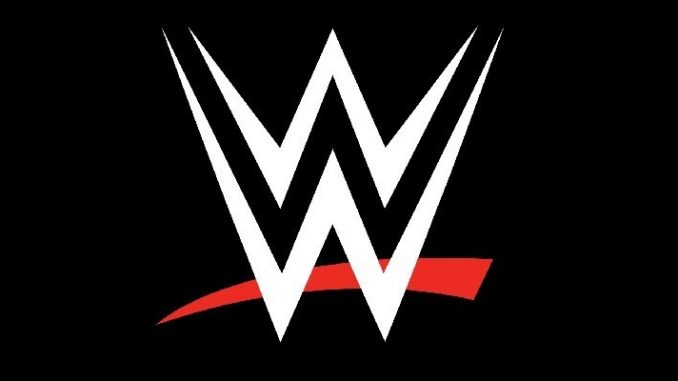
WWE reported its fourth-quarter and year-end earnings Thursday, achieving record revenue and profit despite the COVID-19 pandemic.
With the company continuing to swim in profitability from its domestic television rights, the loss of live events in 2020 did not prove to be a major factor for the company to achieve record revenue.
The WWE’s earnings call led by Nick Khan, Kristina Salen, and Stephanie McMahon-Levesque can be accessed free on the POST Wrestling Café feed.
For the year 2020, the company posted a net income of $131.8 million, an increase of 71 percent from last year’s figure of $77.1 million with 2020 revenues of $974.2 million, which was up from $960.4 million in 2019.
The Media division was the key as it rose 17 percent due in large part to the escalation of its core content rights with revenue of $868.2 million. Live Events brought in revenue of $19.9 million for the year, which will always have an asterisk next to it given the pandemic, and Consumer Products fell to $86.1 million from $91.7 million in 2019. In the latter section, while venue merchandise was depleted (dropping from $18.6 million to $3.2 in 2020), the WWE Shop division helped greatly by generating $41.2 million in revenue – an increase of 38 percent from 2019.
For the fourth quarter, the reported net income of $13.6 million off revenue of $238.2 million, which was down from Q4 of 2019 that posted net income of $69.3 million and revenue of $322.8 million. The key reason for the discrepancy was WWE’s inability to stage a card in Saudi Arabia during the fourth quarter, unlike last year. It was stated previously by the company that any events they missed in Saudi Arabia would be tacked on at the end of the ten-year they entered with the government in 2018. The current relationship calls for two events in Saudi Arabia per year with the company holding Super ShowDown in February 2020 as their only trip to the country.
Operating revenue for the quarter was listed at $36.2 million and Adjusted OIBDA at $51.2 million.
In the key areas of their business, the Media division listed revenue of $210 million, Live Events were only at $700,000 for obvious reason, and Consumer Products had $27 million in revenue, which was a decrease of $3.8 million due to WWE and 2K not releasing their franchise title this year.
In WWE’s Key Performance Indicators, the viewership average for Raw for the fourth quarter was 1,733,000 viewers, which is down 21 percent from Q4 2019 that was 2,180,000. The USA Network was down 11 percent year-to-year, so the drop by Raw was greater but Raw’s drop would also be factored into USA’s decline. The top 25 cable networks were even year-to-year but that was greatly enhanced by the recent election cycle and cable news lifting the overall average.
For the quarter, SmackDown averaged 2,105,000 viewers and was down 15 percent from 2019 (which is an accurate comparison as both quarters featured SmackDown airing on Fox). Fox was down 31 percent year-to-year and the top four networks were down by 21 percent.
Television audience erosion was not as larger a topic during this call, although when addressing it, Khan believes they are not losing eyeballs but rather, they are leaving linear television for digital.
As of December 31, 2020, the WWE Network 1,470,000 paid subscribers with a breakdown of 1,081,000 domestic and 389,000 international subscribers. The domestic figure is the important one as that is the figure Peacock is aiming to inherit and hopefully, grow, given the reduction in price for the ad-supported version of Peacock. The actual figure come March 21st when the changeover occurs, should be a bit higher with the hope that subscribers would have grown for the Royal Rumble and the lead-up during WrestleMania season.
WWE provided guidance for 2021 where they are going with the assumption that there will still be many COVID restrictions. They are projecting an Adjusted OIBDA of $270-305 million for 2021 and would be 15-20 percent higher without COVID restrictions. They also anticipate larger expenses with more furloughed employees returning and maintaining the costs of operating the WWE ThunderDome.
During the call, CFO Kristina Salen cited the production costs associated with the ThunderDome added 25 percent per episode (it wasn’t clarified if that is a percentage increase from a regular episode pre-pandemic or the episodes at the Performance Center). The company plans to continue with the ThunderDome concept at least for the first of 2021. Salen added that they do not expect to stage other ticketed events until at least the second half of 2021, meaning fans attending shows will be limited to WrestleMania in April.
Company president and Chief Revenue Officer Nick Khan sounded bullish on the idea of continued international expansion with content tailored for different parts of the world noting the recent Superstar Spectacle that he stated was viewed by over 20 million people across Sony’s platforms. He isolated India and Latin America as the two areas they are targeting for such growth.
On the Peacock deal, Stephanie McMahon said “the landscape has changed” and noted it was time to pivot away from the technology that was necessary for the best fan experience and double down on what they do best – content creation, storytelling, and production. McMahon also emphasized the potential crossover opportunities with NBC Universal and their large-scale sporting events to promote WWE pay-per-views and have a deeper relationship through NBCU’s marketing and sales department.
Khan was asked about the pending shutdown of the NBC Sports Network and doesn’t believe the shift of programming to the USA Network will bear any impact on Raw or NXT.
We will have an in-depth discussion on the earnings report with Brandon Thurston of Wrestlenomics on Friday.
